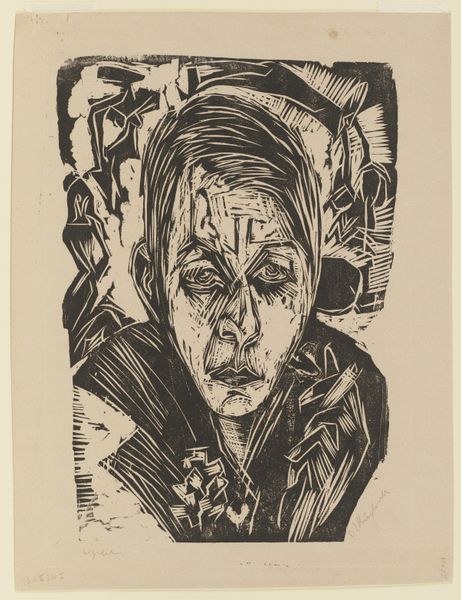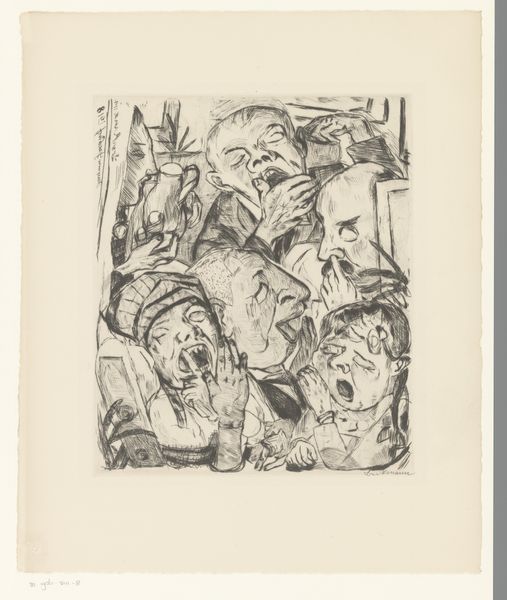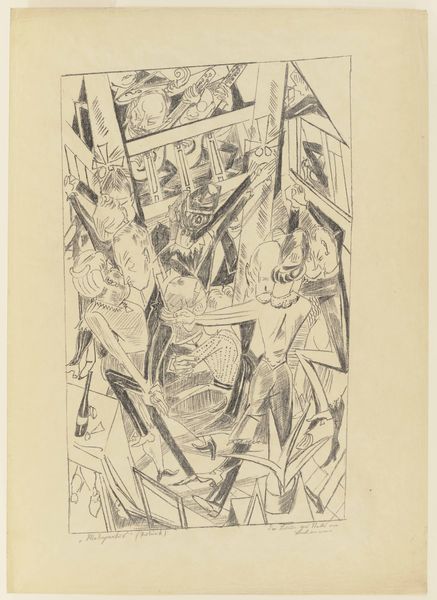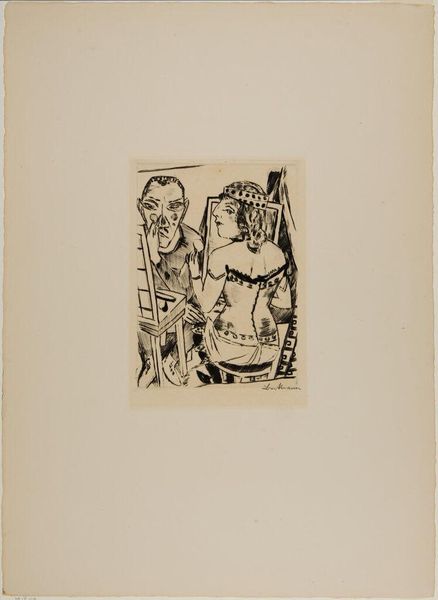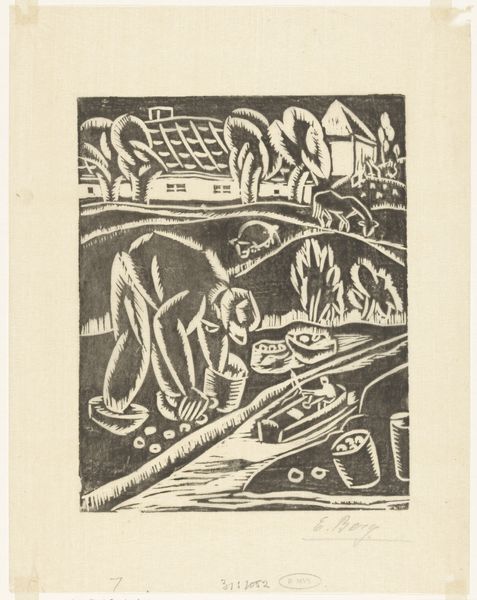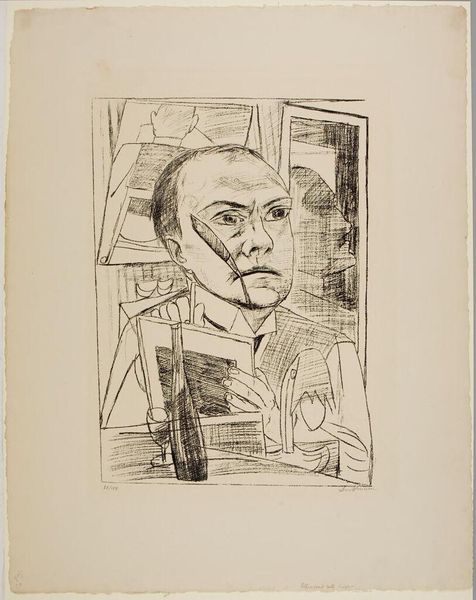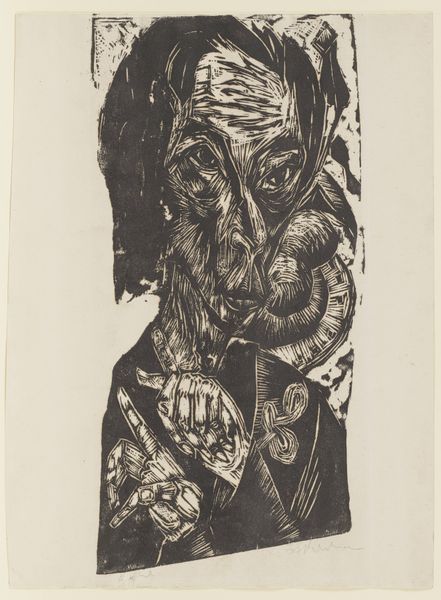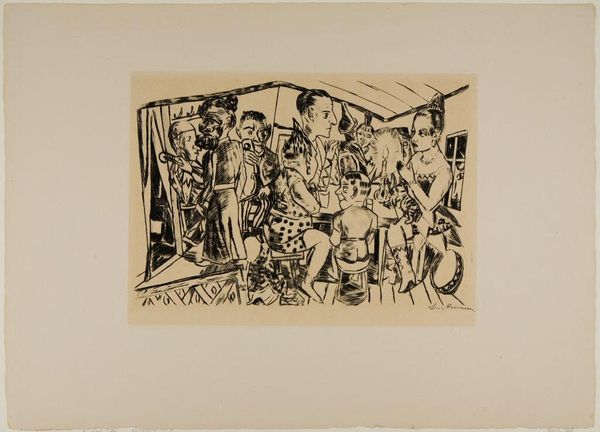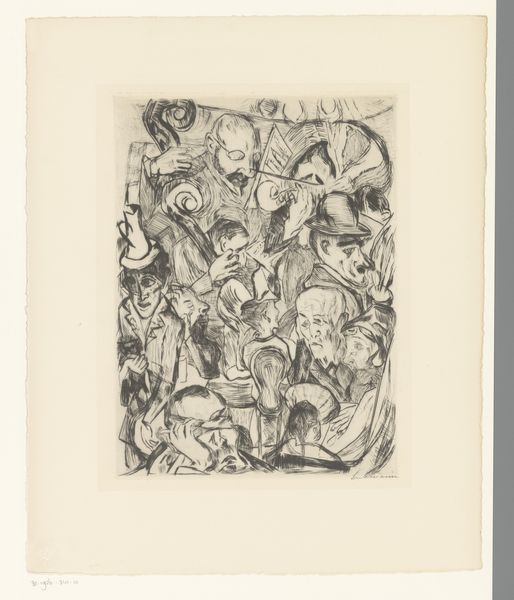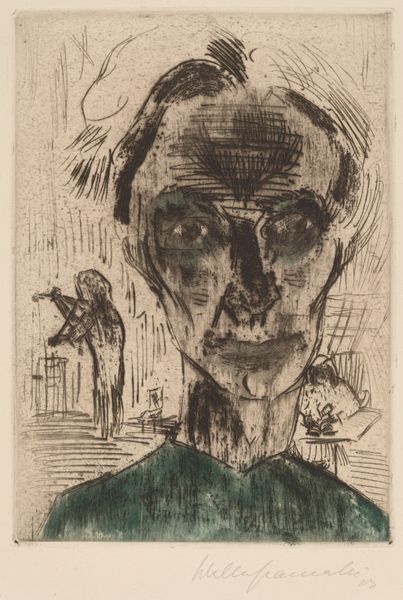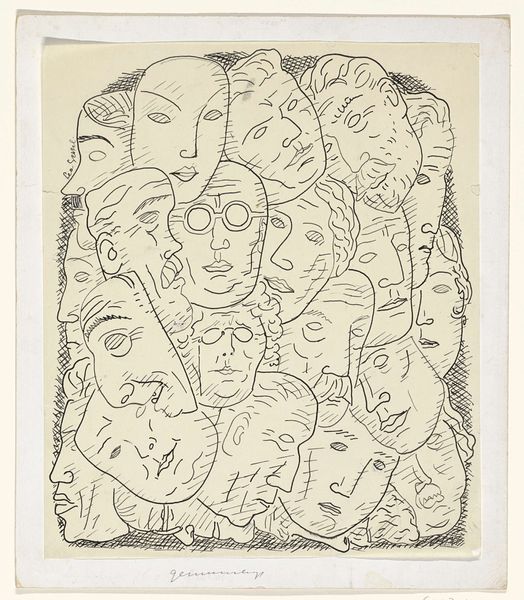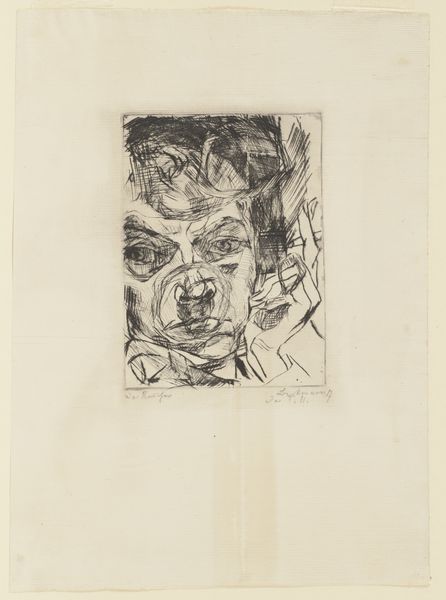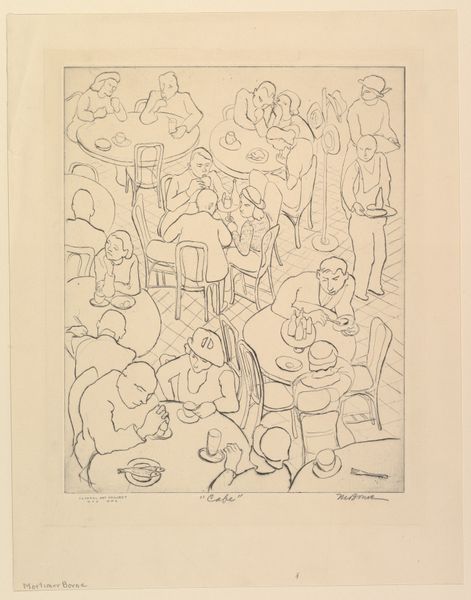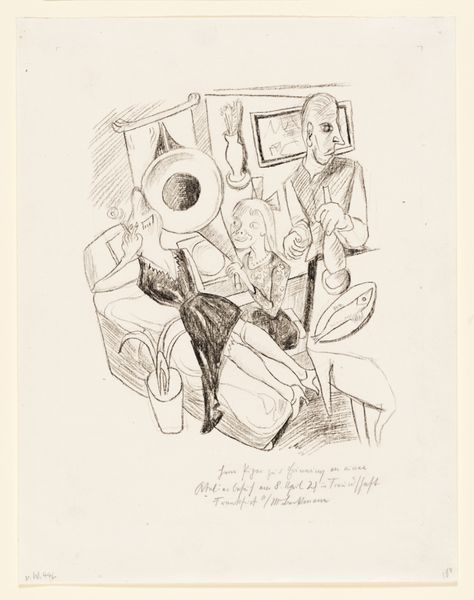
drawing, print, intaglio
#
portrait
#
drawing
# print
#
caricature
#
intaglio
#
caricature
#
expressionism
Copyright: Public Domain
Curator: Looking at "Königin Bar (Self-Portrait)" by Max Beckmann from 1920, now at the Städel Museum, an immediate sense of claustrophobia takes hold, wouldn't you agree? Editor: Absolutely. It's a powerful, almost aggressively personal print. The way Beckmann uses intaglio to create these dense, interwoven lines certainly amplifies that feeling. Curator: Intaglio, the technique of incising lines into a metal plate to hold the ink, suits Beckmann’s Expressionist style perfectly. Notice how he situates himself, a weary subject, surrounded by other faces in an interior setting, it speaks volumes about the cultural landscape in Weimar Germany after the First World War. The teeming masses and personal introspection all at once. Editor: Indeed. The composition is remarkably structured despite the apparent chaos. His direct gaze, magnified by the caricature-like distortions of his features, forces the viewer into an uneasy confrontation. The contrasting light and shadow give so much gravity to the work. Curator: Yes, there’s also this grotesque element. The so called Weimar Renaissance certainly had a dark underbelly, marked by social unrest and economic upheaval, especially for artists and intellectuals. I believe the caricature, particularly Beckmann’s self-representation, hints at a personal crisis intertwined with this wider societal unease. Editor: The way he renders the faces in the background—almost like grotesque masks, I think emphasizes the superficiality of the society, whereas Beckmann himself appears almost naked emotionally by comparison. It brings out such sincerity from the piece. The formal elements really make this interpretation spring out. Curator: Right, that comparison also underlines how many artists at the time aimed to expose the hypocrisy they perceived in the establishment. Through its sharp contrasts and brutal honesty, the piece does mirror the anxieties and disillusionments of a society grappling with massive change. It speaks directly to the political turbulence after the war. Editor: Seeing this print through a formalist lens, appreciating the visual construction and interplay of textures, certainly adds layers to our understanding of its cultural impact. It strikes me that Beckmann has made something strikingly individual, a deeply personal reflection of universal themes. Curator: Yes, and thinking about the historical moment gives us the larger picture in order to grasp the universality and tragedy in his own subjective lens. Editor: A perfect confluence of subject and form indeed.
Comments
No comments
Be the first to comment and join the conversation on the ultimate creative platform.
